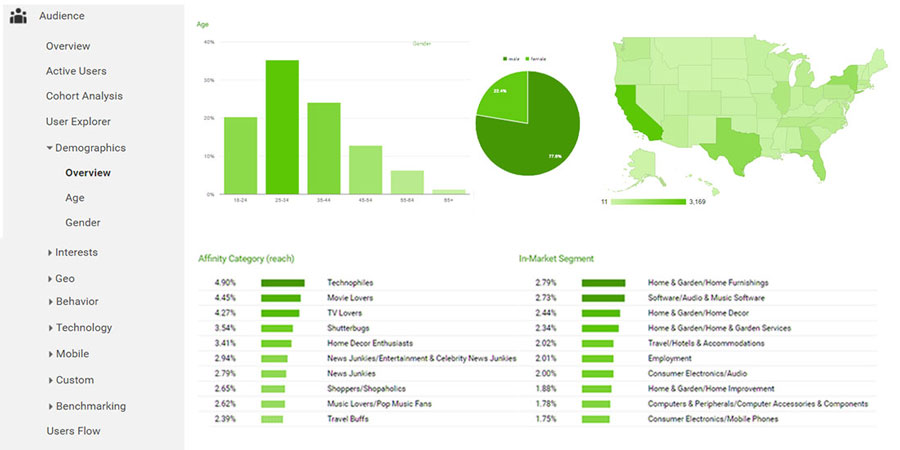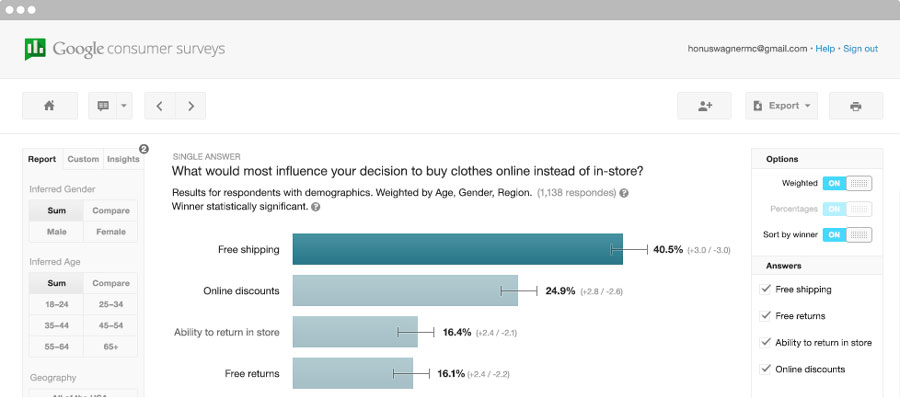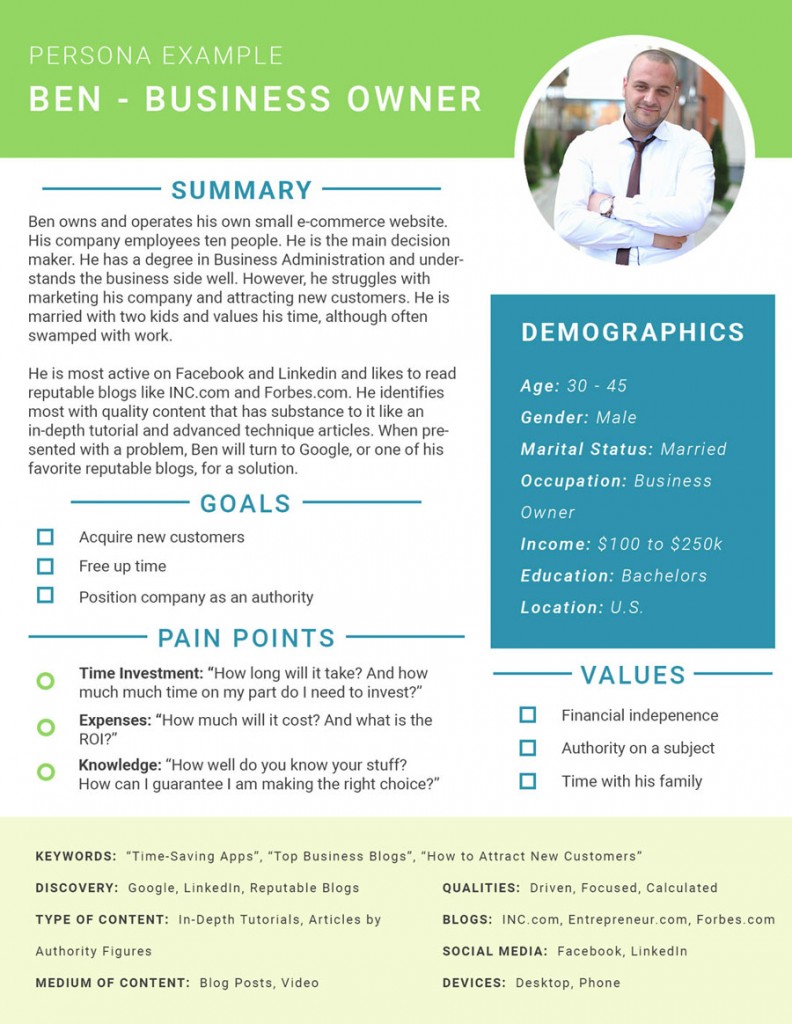How to Define Your Target Audience & Develop Personas
This post is part of a 9-step guide to creating a Content Strategy. To return to the landing page for this guide, click here.
Now, it’s time to define your audience and develop customer personas based on this information.
I know what you’re thinking: “Can’t I just skip this step and move onto creating content?”
No.
Defining your audience is an important part of any Content Strategy. To fully understand how to write (and sell) to your customers, you must first define who your customers actually are. On top of that, you also want to know what interests them, what problems they have, how you can solve those problems, where they are, where they find their information, and so on.
Basically, any information that helps to create a clear picture of who they are and how you can provide content that will actually attract and be helpful to them.
Only once you truly understand this, can you create effective content.
Additionally, you don’t want to waste time marketing (or writing) to the wrong people. Especially, if you’re a B2B company. You need to think about the people who can actually make a purchasing decision within the companies that you want to buy your product. You don’t want to spend time marketing to the people who can’t even buy your product.
So that’s why it’s so important to define your audience. Again, it will help to guide your strategy and the type of content you should create.
Defining Your Audience:
Defining your audience is essentially stating who your customer base is along with some character-defining attributes. Even if you think you already know who these people are, do not skip this step. You may find that you missed some vital information.
In addition, you probably have multiple customer types (which we’ll define as personas later), so you’ll probably have to define this information for each type of your customers.
To get you started, below are some questions to answer to help define your audience:
DEMOGRAPHICS:
- What are your customer’s demographics?
- Age
- Gender
- Job Title
- Income
- Marital Status
- Education
- Location
WHO ARE THEY?
- What is their role in the buying process?
- What’s important to them?
- What is causing their need for change?
- How do they generally go about enacting that change?
- What do they value?
WHAT’S THEIR MOTIVATION?
- What motivates them? (emotion, fear, etc.)
- What are their goals?
- What are their fears?
- What are their challenges?
- What problem do they have that needs solving?
- What are their pain points?
- What are their needs?
- Where is this company or person trying to go?
- Is the company trying to grow faster, become more efficient, cut costs?
WHAT CONTENT DO THEY LIKE?
- What type of content do they enjoy/share? (images, video, tutorials, etc.)
- How do they find their content? (Google, Twitter, Instagram, Magazines, etc.)
- What keywords do they search?
- What do they link to?
WHERE ARE THEY?
- Where do they spend their time online? (social media, forums, blogs)
- What do they care about?
- Who do they listen to?
- Who do they look to for advice? (any authoritative figures)
- How can you best reach them? (advertising, organic search, etc.)
SEGMENTING
- What channels do they use to communicate?
- Where are they along the consideration/conversion path?
SERVICE/PRODUCT SPECIFIC
- What problems does your product or service eliminate for them?
- What would hold them back from buying your product or service? (price, quality, lack of authority, etc.)
- How does your product or service make them look like the hero in their company?
- How does your product or service make their life easier or better?
You may not be able to answer all of these questions right away, but the more you can, the further along you will be into to truly understanding who your customers are. And the better you can understand your audience, your customers, the better you can serve them and provide things they actually care about and want.
To add to that, in no way can I possibly come up with, or list, every possible question you might need to ask in order to find out customer information specific to your company.
You may find there are certain things in the list above that are not necessarily vital to your business or you may find you need to expand upon this list. Sit down with members of your team to fully develop a list of questions to answer about your customers.
Also, don’t spend too much time fretting about the little things. Yes, demographics are important to know, and depending on your type of business, may be more or less important. But, the difference between a customer’s age of 35 and 40 is not going to make a huge difference. Nor will it if they have one kid or two.
The main thing you are trying to learn when finding demographics are the main indicators. Age might tell you at what stage in life they are. Having kids or not will make a huge difference in what that person might value. Therefore, affecting the type of content you would produce for them.
Once you have your list of the things you need to know in order to define your audience, it’s time to go find that information.
Where to Find Audience Information
INTERNAL INFORMATION
The best place to start is to a do an internal check on the information you may already have on hand. Maybe you, or someone else within the company, has already documented this information.
At the very least, if you’ve been operating for awhile, you probably already have a list of customer testimonials, email exchanges, and other customer feedback that you can analyze to try to find the answers to these questions.
Start there, and then move on to the following methods.
GOOGLE ANALYTICS

If you already have a website that has had a steady flow of traffic, then Google Analytics is a great place to look. You’ll be able to find basic demographics on your visitors by navigating to the “Demographics” tab under “Audience”. You can also find information on their interests as well.
FACEBOOK INSIGHTS
Again, if you have been in business for some time and have generated a following on your Facebook page, then Facebook Insights is another place to look for basic information.
COMPETITOR ANALYSIS
If you’re a new business or even one that’s been at it for a while, you can find valuable customer information by analyzing your competitors. I won’t get into this too much right now (as there is a full section on competitor analysis in the next step), but by simply looking at the type of content your competitors put out, you can get a fairly good idea what type of content your audience enjoys.
STAKEHOLDER INTERVIEWS
Now to really get into the “meat” of what your customer’s defining attributes are (including paint points, what content they enjoy, what motivates them, etc.), you’re going to need to go a bit farther than just looking at Google Analytics and Facebook Insights.
The first thing to do is to sit down with your team, or anyone that has a stake in developing the Content Strategy, and have a discussion on defining your audience.
These people might include:
- Customer Service
- Sales Team
- Marketing Staff
- Managers
Basically, anyone that comes into contact with customers. You don’t want to just limit this to your marketing team.
Go through and find answers to all the questions listed above. And even add your own specific to your industry.
Use your intuition. Try to put yourself in your customer’s shoes and think about how they would act. Consider what approaches they might take to finding a solution to their problem, how they might go about their day, and so on.
CUSTOMER SURVEYS & INTERVIEWS
Finally, you can even move onto asking your customers directly. You can do this in the form of a survey, using a tool like Google Surveys or Survey Monkey, or you can even hold interviews with some of your customers. Try to get a fair mix of good and bad customers if you can.

Once you’ve gone through and answered all these questions, it’s time to take all of that information and develop it into a set of customer personas.
Developing Personas
If you are unfamiliar with personas or have never developed one before, all a persona really is, is a summary of all that audience defining information categorized into different buyers/personalities. In other words, it’s a way to put a face and human description to each of your different types of buyers.
Often times, they’re even named. For instance, Bill the Business Owner or Eric the Entrepreneur. These are then followed by the characteristics that would define this type of buyer. They don’t have to be named like that, but many companies do as a way of remembering, and referring to, the different personas.
A business may have different groups of buyers with personas in each. However, don’t go overboard with developing a hundred different personas. Personas are meant to capture your main customers into one profile. I would recommend three to five personas.
Below, is an example of a customer persona:

Let’s take a further look at the above example and what you can learn from this information (I include the Photoshop template for this graphic in this download, so you can create your own fancy persona).
Many of the details are arbitrary, although they are indicative of many of the characteristics that would be associated with a business owner. It’s meant to show you how you might plug in your information and make sense of it all.
But, look at how starting to have this information will begin to define how, when, and where you should produce your content.
For instance, Ben (the fictitious name for this persona), respects people/companies who know what they’re talking about. So positioning your company as an authority will be paramount to your success in targeting Ben.
Additionally, Ben values his time and return on investment. So creating content that focuses on how Ben can save time or which marketing methods offer the best ROI, will appeal to Ben. You might even try to write a few articles on those topics and pitch them (as guest blogging opportunities) to some of Ben’s favorite blogs like Inc.com or Entreprenuer.com.
Finally, you have information on where Ben spends his time, like LinkedIn and Facebook. So it might make some sense to develop content specifically for those networks, creating ads or promoted posts, or just sharing your latest articles on those networks to make sure Ben sees them.
So you get the idea of why doing this whole step is important. Once you know the information that defines your audience, and the people most likely to buy from you, you can effectively create content that appeals to them.
One more thing to note, like I mentioned above, you’re not going to know everything there is to know about this person. The goal is to find out information specific to your industry, and services, that will help define who you are trying to attract.
The important thing is that you make sure you have the information you need for your company to understand your customers. Not everyone is going to need to answer every question and know every last detail about their customer.
Additionally, some things may take time to discover and others may come right away. The persona is meant to be a growing and evolving thing. So be sure to revisit your personas after some time to ensure you have everything correct.
If you’re still having trouble creating your personas, here are a few good further resources to check out:
